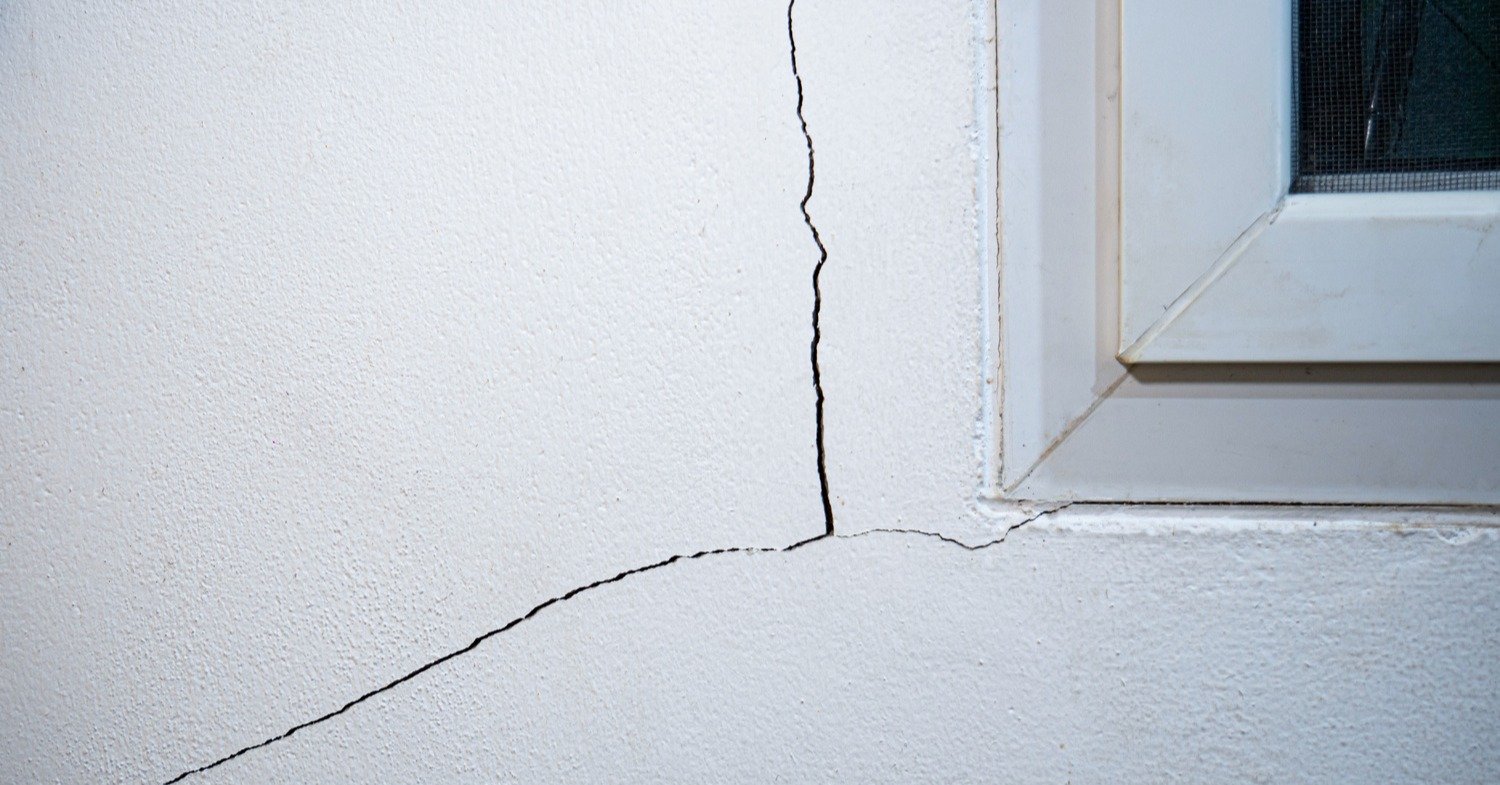Owning an old house means living with charm, character, and the occasional quirk. From intricate woodwork to textured plaster walls, there’s craftsmanship to admire in every corner. But when a spider-like crack appears in one of those walls, it’s hard not to wonder: Is this just part of the home’s aging personality, or a sign of something more serious?
Cracks are a normal part of life with plaster walls and are practically unavoidable. When it comes to dealing with cracks in plaster, what truly matters is understanding the conditions that cause cracks to worsen. By identifying the underlying factors, you can determine whether the cracks in your plaster wall are harmless or a sign of a bigger issue.
This blog will examine the various causes of plaster cracks and provide guidance on how to address them.
Understanding Plaster and Its Substrate (Lath)
Known for its durability and one-of-a-kind finish, lath and plaster walls and ceilings remain a hallmark of craftsmanship in older homes. But while its smooth or textured beauty is part of the charm, plaster is also more labor-intensive to install and repair than modern drywall.
Applied in layers over a wood or metal lath framework, high-quality plaster work requires experience and skilled hands, and as many homeowners discover, it’s not always forgiving. Even something as simple as hanging a picture can lead to unexpected cracks, leaving you wondering what’s cosmetic and what might signal a deeper issue.
How Plaster is Installed
Plastering is a centuries-old technique that predates drywall by hundreds of years and has remained largely unchanged over time. On top of a wall’s studs, thin, narrow wood strips (called lath) are nailed horizontally, leaving small gaps between each strip. In some cases, especially in modern installations with curved walls, metal lath—a mesh-like material—can be used instead of wood for improved flexibility and strength.
After the lath backing is installed, wet plaster from the scratch coat (first layer of plaster) oozes through the gaps in the lath and hardens behind it, forming “keys” that lock the plaster in place. Lath must be installed tightly with correct spacing so that the plaster doesn’t shift and crack. Properly installed lath increases the longevity of plaster walls.
Features and Benefits of Plaster
Plaster has been around for a long time, in part due to the natural materials used to form it. Early plasters often included lime, sand, and even horse hair, which was used for a textural reinforcement. This early formulation was very slow-drying. Later, gypsum was added for faster setting times.
Plaster has long provided a smooth, refined finish that can’t be perfectly replicated with drywall. The texture and aesthetic that plaster provides are truly unmatched. Using flexible mesh lath, plaster can form an irregularly shaped wall. This customizable feature of plaster allows for one-of-a-kind wall treatments with an artisanal feel.
Not only is plaster impressive visually, but it is also great for sound insulation, as its multiple layers provide a density that effectively absorbs sound waves.
Plaster is harder and more resistant to dents than drywall, but it is also more brittle and can form hairline cracks over time. The use of hammering nails into the wall can cause small cracks to appear more quickly. Picture rails were invented to help mitigate some of the cracks caused by picture hanging and became a very popular way to hang art without damaging walls.
Common Causes of Plaster Cracks
Using nails in a plaster wall isn’t the only thing that can cause cracks in plaster. Below are some of the factors that contribute to cracking:
1. Age of the Home and Materials
Older homes often have plaster walls that show wear over time. Plaster can become brittle, and its integrity depends on both age and the condition of its underlying structure.
In the Seattle area, plaster walls and ceilings are commonly found in older homes. Typically, modern homes aren’t constructed with plaster in the Pacific Northwest due to the high cost of installation and the negative characteristics mentioned in this article. There are instances of plaster used in very high-end modern homes, though, for its distinctive artisanal look.
2. Foundation Movement and Structural Shifts
Poor soil conditions, particularly expansive clay, can have a significant impact on a home’s foundation, and in turn, its plaster walls. Clay soils are known for their tendency to expand when wet and shrink when dry, creating a cycle of movement that puts pressure on a home’s structure. Over time, this shifting can lead to foundation settling, uneven floors, or wall movement. Plaster, being rigid and sometimes brittle, doesn’t flex well with these fluctuations. Instead, it often responds by cracking and flaking. Sometimes, plaster cracks are minor and easy to repair—but other times, cracked plaster can indicate underlying structural issues that shouldn’t be ignored. Cracks caused by foundation movement may appear around door frames, windows, or on ceilings, and can worsen over time if the underlying soil issues are not addressed.
Older homes built with plaster walls often have structural components, like floor joists, that weren’t designed to support the heavy loads common in today’s homes. Modern features like a half-ton range, oversized refrigerator, or a large kitchen island with a solid surface countertop place significant stress on the flooring system. This added weight can cause the floors to deflect or shift, leading to cracks in the walls or ceilings. In some cases, especially if there’s plaster in the basement ceiling directly below, that movement can even cause the plaster to loosen or fall.
3. Water Infiltration
Water infiltration can cause a variety of issues with plaster, including
- Expansion and contraction: Moisture causes the wood framing behind the plaster to swell. As it dries, the wood contracts. This constant movement puts stress on the brittle plaster, causing it to crack.
- Rotting structural materials: Ongoing leaks from windows, roofs, or plumbing can lead to water damage that eventually rots the wood lath or framing behind the plaster. As the underlying structure weakens or shifts, the plaster will crack, flake, and even detach.
- Loss of adhesion: When water soaks into plaster, it can weaken the bond between layers or between plaster and lath. This may cause sagging, bubbling, or eventual breakage.
- Staining and discoloration: Even before cracks appear, water intrusion often causes visible staining and discoloration. Over time, the compromised areas may dry unevenly and develop cracks or flaking.
- Freeze-thaw cycles: In cold climates, moisture trapped in plaster can freeze and expand during winter, leading to internal cracking and deterioration, most often near exterior walls or attic spaces.
- Localized cracking around leak points: Cracks often form in areas where water infiltration is common, such as near windows, chimneys, or ceiling corners, indicating the need for inspection and repair.
- Increased brittleness after drying: Once saturated plaster dries, it may become more brittle and prone to cracking than before, especially if the issue is left unaddressed for long periods.
4. Climate and Humidity Changes
Plaster behaves like a sponge, absorbing and releasing moisture based on the surrounding environment. When the air is humid, plaster takes in moisture, often causing existing cracks to appear smaller due to slight swelling. But when the plaster dries out, those cracks can become more pronounced. Consistent indoor humidity levels are crucial in helping to prevent this type of cracking.
Heating and air conditioning systems help regulate indoor moisture by removing excess humidity and maintaining a stable environment. However, in transitional seasons (spring and fall, particularly), when it’s too cool for AC and too warm for heat, humidity levels often rise, especially during rainy periods.
In homes that are left unattended or where the HVAC system isn’t used regularly, plaster walls are even more vulnerable. Without consistent temperature and humidity control, the material is more likely to shift, crack, or deteriorate over time.
5. Adjacent Renovation Work
Vibration and changes during nearby remodeling can loosen or damage plaster walls. Even if you’re not touching them directly, the plaster may not survive adjacent demolition or construction without damage.
6. Unstable Substrate
Plaster relies heavily on the stability of the surface it’s applied to—typically wood or metal lath. If the lath isn’t properly secured during installation, it can become loose over time due to natural settling, vibrations, or moisture damage. This movement undermines the integrity of the plaster, which, like a thin layer of concrete, lacks flexibility. As the lath shifts, the rigid plaster above it begins to crack or even detach entirely in severe cases.
The longevity of any plaster wall or ceiling is only as strong as its foundation. That’s why ensuring the lath is tightly fastened and free from water damage is essential, especially in older homes where materials may have degraded over the decades. If cracks appear in consistent patterns—such as horizontal lines or sagging sections—it may be a sign that the cause of the cracks lies in the substrate itself, not just the surface of the plaster.
How Do You Know If Plaster Cracks Are Serious?
So, when should you be concerned about cracks in plaster walls? It’s important to note that most plaster cracks are normal. Minor cracks in plaster are common, especially in older homes, and often don’t indicate a serious problem. The trouble is that for the untrained eye, it’s not always easy to distinguish between harmless cosmetic cracks and signs of more serious issues. There are several types of plaster failures to watch for.
Types of Serious Plaster Failures
- Loose or improperly attached substrate: If the wood or metal lath beneath the plaster wasn’t installed securely, the loose plaster may eventually crack and separate.
- Deteriorating building materials: Traditional plaster often used horsehair as a binding agent. Over time, this material breaks down, weakening the bond between plaster and lath.
- Shearing or separation from the lath: Plaster clings to the lath by physically keying into gaps between the boards. If those keys break due to age or movement, the plaster can detach and fail.
Warning Signs of Plaster Failure
- Cracks not following natural lines: If cracks don’t follow corners or ceiling lines, they may indicate more than surface settling, especially if they run diagonally across the wall.
- Diagonal cracking across horizontal lath: Since lath is typically installed horizontally, cracks running at odd angles may suggest the plaster is no longer properly bonded.
- Visible gaps or movement: If the plaster feels loose to the touch or you notice movement, it may be on the verge of detaching entirely.
Can I Repair Cracks in the Plaster Wall or Ceiling?
Plaster, when correctly installed and protected from moisture and structural movement, can last for over a century. You can fix cracks in plaster by patching the area, but once it reaches a certain level of disrepair, it may be more cost-effective and efficient to install drywall over the existing plaster rather than repair it. This is particularly true if the plaster is cracked or damaged in multiple areas of the home, especially ceiling surfaces.
So, how do you know when to patch versus replace? What considerations should be taken into account when addressing cracked plaster?
When to Patch Plaster
If your plaster is in mostly good condition with only minor cracking, patching is a viable option, especially in homes where preserving original building material is a priority. Note that patches are very likely to crack again in the future (whether months or years down the road), because the new plaster used for patching and the preexisting plaster will expand and contract at different rates.
Plaster can last a long time, even with cracks. If the plaster is still firmly attached to the wall and you don’t mind the look of minor cracks, there’s often no need to replace it. Many homes over 100 years old have cracked, but solid plaster that still performs well.
When discerning whether to patch plaster, remember that skilled plaster repair is a specialized trade that is becoming increasingly rare. In cities like Seattle, only a handful of companies are trained in authentic plaster repair. If you can’t find an experienced plaster contractor, replacement with drywall may be your only option.
When to Replace Plaster with Drywall
Aesthetic preferences matter in all aspects of your home. If visible cracks in your otherwise functional plaster bother you or interfere with the clean look you want, replacing some or all of your plaster may make sense for your personal home goals.
If plaster is actively falling off your walls or if you’re remodeling extensively, replacing plaster with drywall is often more cost-effective and durable in the long term. This is particularly common in high-humidity areas, such as the Pacific Northwest, where plaster’s longevity can be compromised by environmental factors and temperature changes.
It’s important to note that fully replacing old plaster walls involves more labor and is often more costly as a result. Removing old plaster and lath, installing new drywall, and repainting is a more labor-intensive and expensive process compared to patching, replacing just one wall of plaster with drywall, or installing drywall over top of plaster walls. But, replacement may be worthwhile for major renovations or when damage is extensive.
Get a Professional Evaluation
Determining whether plaster should be repaired or replaced depends on its condition and the cause of the cracking. If you’re unsure what type of cracking you have, reach out to a local professional who can provide sound advice. An experienced professional can determine whether cracks are a result of normal aging or a deeper structural concern.
When properly maintained, plaster can last for centuries. Many homes across Europe still have their original walls, some installed over 500 years ago. However, just because plaster can have incredible durability doesn’t mean it’s without its challenges. Plaster can be difficult to work with and maintain, especially in older homes or during renovations.
Ultimately, professional guidance is key. To make the right decision for your home, work with a trained professional you trust. Find someone who can assess your specific situation and help you to repair, preserve, or replace your plaster walls.



